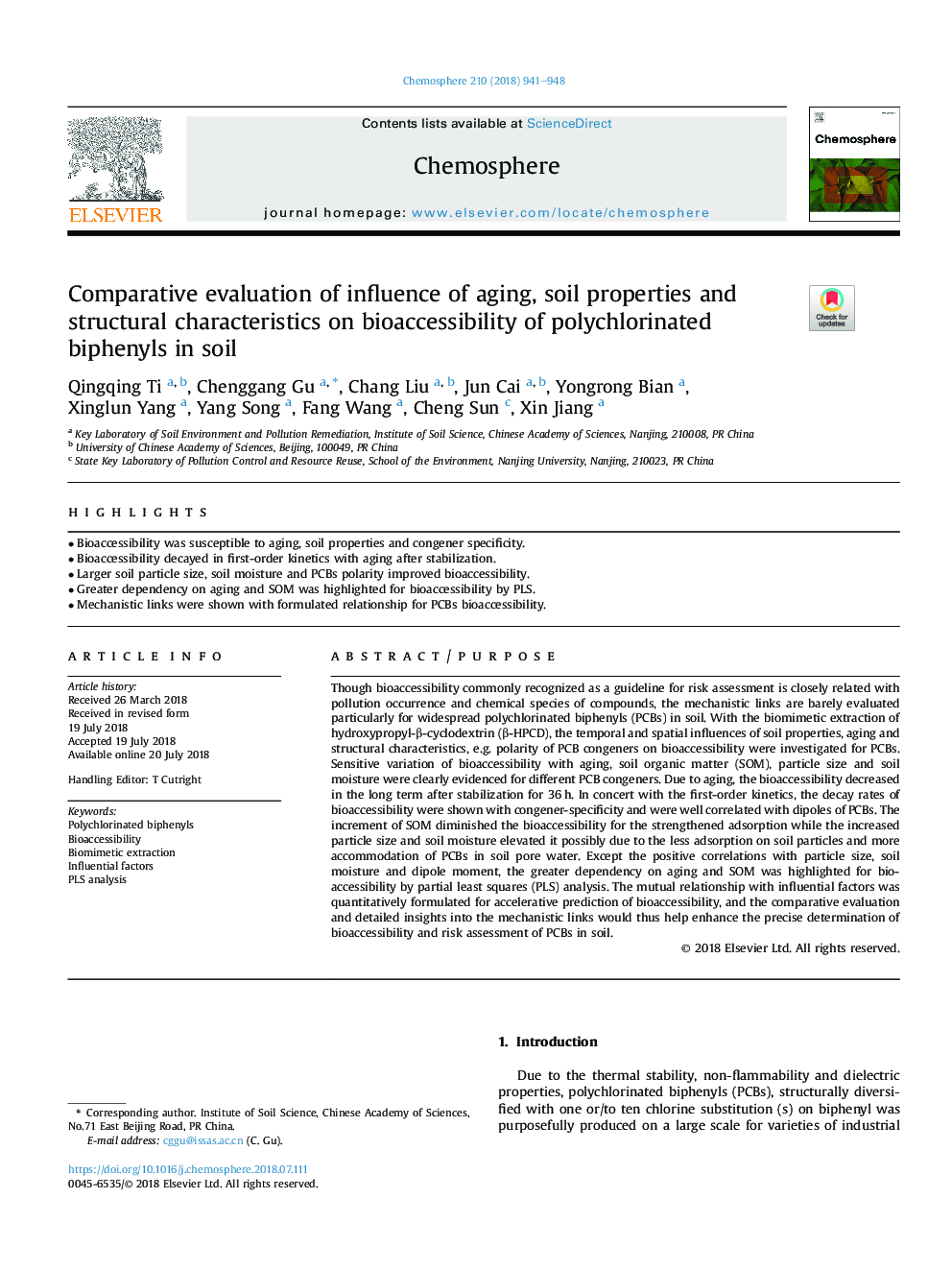| Article ID | Journal | Published Year | Pages | File Type |
|---|---|---|---|---|
| 8850417 | Chemosphere | 2018 | 8 Pages |
Abstract
Though bioaccessibility commonly recognized as a guideline for risk assessment is closely related with pollution occurrence and chemical species of compounds, the mechanistic links are barely evaluated particularly for widespread polychlorinated biphenyls (PCBs) in soil. With the biomimetic extraction of hydroxypropyl-β-cyclodextrin (β-HPCD), the temporal and spatial influences of soil properties, aging and structural characteristics, e.g. polarity of PCB congeners on bioaccessibility were investigated for PCBs. Sensitive variation of bioaccessibility with aging, soil organic matter (SOM), particle size and soil moisture were clearly evidenced for different PCB congeners. Due to aging, the bioaccessibility decreased in the long term after stabilization for 36â¯h. In concert with the first-order kinetics, the decay rates of bioaccessibility were shown with congener-specificity and were well correlated with dipoles of PCBs. The increment of SOM diminished the bioaccessibility for the strengthened adsorption while the increased particle size and soil moisture elevated it possibly due to the less adsorption on soil particles and more accommodation of PCBs in soil pore water. Except the positive correlations with particle size, soil moisture and dipole moment, the greater dependency on aging and SOM was highlighted for bioaccessibility by partial least squares (PLS) analysis. The mutual relationship with influential factors was quantitatively formulated for accelerative prediction of bioaccessibility, and the comparative evaluation and detailed insights into the mechanistic links would thus help enhance the precise determination of bioaccessibility and risk assessment of PCBs in soil.
Related Topics
Life Sciences
Environmental Science
Environmental Chemistry
Authors
Qingqing Ti, Chenggang Gu, Chang Liu, Jun Cai, Yongrong Bian, Xinglun Yang, Yang Song, Fang Wang, Cheng Sun, Xin Jiang,
